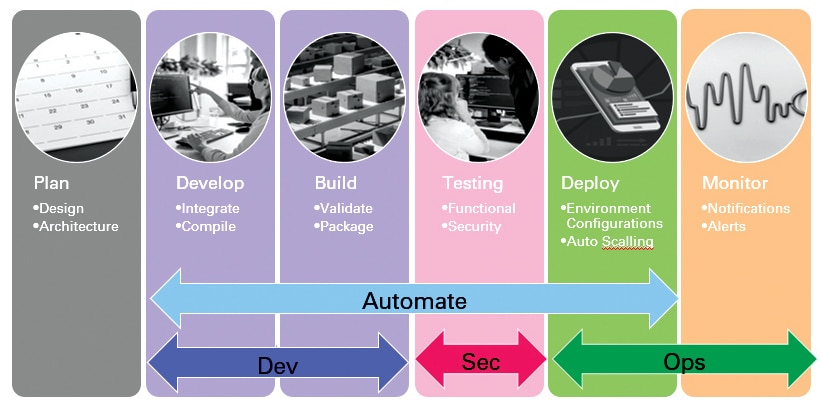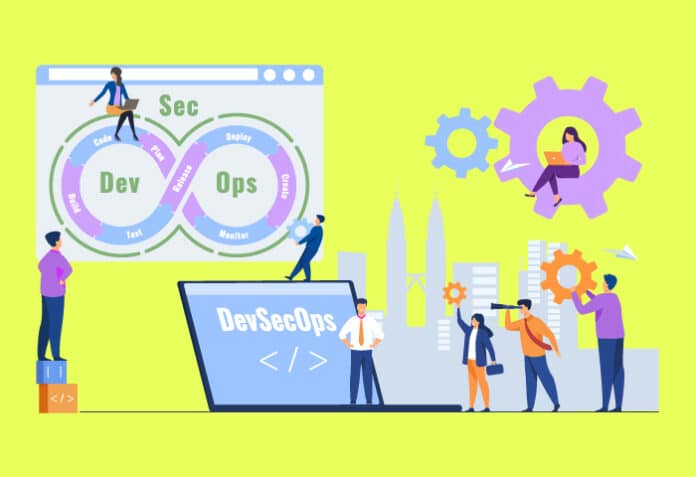AI impacts DevSecOps in many positive ways — from accelerated testing and better security to quicker delivery of software. It promises to enhance every organisation’s potential.
In any organisation with a technology-driven IT department, the pursuit of efficiency, agility and cost-effective high quality software development is an ongoing quest. This desire for rapid software development, aligned with the ever-increasing urgency of business stakeholders, has led to the evolution of modern DevSecOps practices. This article delves into how AI is reshaping the landscape of DevSecOps.
Elevating development and testing with DevSecOps
Successful digital transformation stories have a common denominator — the adoption of modern DevSecOps practices. This transformative process encompasses build-test-release operations, prioritising speed, quality and value creation.
Development and testing teams now face the challenge of delivering accurate, high quality products that adhere to composable architecture and cloud-based application requirements, along with rapid validation and deployment of the solution. The foundation of this efficiency lies in continuous integration (CI) and continuous delivery (CD). CI standardises development practices, while CD ensures rapid deployment with necessary libraries, configurations and provisioning. These practices, collectively known as DevOps, have proven effective for organisations embracing them.
The testing of developer code at unit level could be integrated within the CI services of most readily available products, open source or otherwise. However, when it came to functional, system and other types of testing, organisations had built manual or siloed automations. These required significant rework with every change in code along with manual interventions in execution, validation and the reporting aspects of testing. The very nature of separation of duties and the function of testing required a different approach to bring it all together.
Table 1 lists the different types of testing and their roles in any given software development initiative. These testing types are not comprehensive; however, the intent is to showcase the various types of testing involved in a typical application development life cycle and the responsibilities spread across various experts within the organisation. After all, standardising, managing and getting software out of the door is a complex exercise.
| Testing type | Description | Responsibility of |
| Unit testing | Test individual modules of application in isolation to validate code is executing as intended | Developer |
| Functional testing | Test a specific functionality in the system to validate the code is executing and responding to user actions | Tester |
| System acceptance testing (SAT) | Also known as integration testing that involves overall testing of systems of many sub-systems/applications or elements. | Domain experts and business users |
| User acceptance testing (UAT) | Validate application life cycle before go-live | Business users |
| Security testing | Process intended to reveal flaws in the security mechanisms | Security tester |
Table 1: Types of testing and who is responsible for them in an organisation
Modern enterprises expect near-real time (if not real-time) access to applications as they are developed. Gone are the days waiting for a URL update for six months because it’s the norm. Integrating security within CI and CD processes has resulted in the evolution of DevSecOps. Figure 1 shows the integration of typical software development, testing and deployment, and the operational journey of code. If planned along with the application design and architecture, DevSecOps can be automated more quickly as all value propositions can focus only on gaining efficiency and forego all repetitive mundane tasks of building, testing and deploying.

The security (Sec) part of DevSecOps automates all types of testing as part of code build and not just security. The code being validated against testing first goes through unit, functional and integration testing to ensure it does what is expected of it, and then the security is validated before the code is deployed.
Now that we have established what DevSecOps is and the automation of code development, testing, deployment and monitoring aspects, let’s look at some of the key benefits of adopting AI in DevSecOps:
- Improved security and reporting
- Improved reliability and resiliency of automation
- Ease of access to contextual data across the development life cycle
- Enhanced resource management with ability to respond automatically
- Ambiguity and anomaly detection with reliable pattern analysis
- Improved collaboration with AI connecting the knowledge bases
The power of AI-driven chatbots
Chatbots have become a common tool for everyday users of technology across all types of devices. The younger generation thrives in the world of social media apps that are designed to respond to the briefest of interests with specific information. By integrating knowledge repositories, information security policies and regulations, test databases and generative AI capabilities, a powerful chatbot can offer valuable insights. For example, a developer can request the bot to compile specific compliance mandates so the person can understand how to code according to them. Or a tester can request what types of tests have been performed historically against a specific code module and what the outcome of those test executions are, to help validate the stability of the code. This can also be used by project managers to learn the effort and time it has taken for specific modules to be updated in the past, and forecast more accurately the release date of the application.
When only a select few individuals in an organisation know how to respond to specific scenarios or incidents, it is typically known as tribal knowledge. This knowledge can be automated by creating a feedback loop across the DevSecOps pipeline, which is data-driven. Here, events are funnelled to a previous process with AI to help learn or adapt to new information.
Many organisations are rapidly adopting AI through their machine learning platforms built on TensorFlow, PyTorch and others. These platforms enhance software development, testing and the delivery teams’ speed and agility.
Change is never easy and is often met with scepticism. Yet, high-performing organisations adopt and redefine how they use technology and manual interventions by automating every possible process. While AI promises to minimise developer functions, there are some worries about loss of jobs. However, by embracing AI with proper planning and establishing governance policies, organisations can enhance decision-making, efficiency and productivity, without necessarily eliminating human roles.
















































































